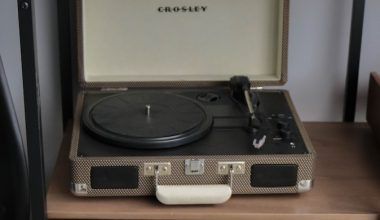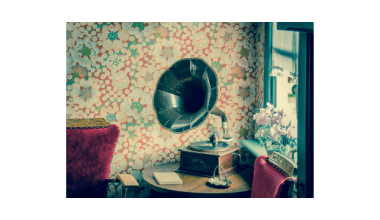If you’re passionate about making music, you’re probably searching for the perfect tools to bring your ideas to life. Whether you’re a beginner just starting or an experienced producer looking to upgrade your setup, choosing the best music production software can feel overwhelming. With so many options available, how do you find the one that fits your style and workflow? Let’s dive deep into the world of digital audio workstations (DAWs) to uncover the best choices for music production.
What is a DAW?
Before we get into specific software, it’s essential to understand what a DAW is. A Digital Audio Workstation, or DAW, is software that allows you to record, edit, mix, and produce music. It’s the heart of modern music production, giving you all the tools you need to create professional-quality tracks.
The right DAW can make a massive difference in how you create music. Some DAWs are better for electronic music, while others shine in recording live instruments. Still, others are great all-rounders. So, which is the best software to produce music? Let’s break it down.
Top Music Production Software in 2024
Here’s a look at some of the best DAWs available today. Each has its strengths, and the “best” choice often depends on your needs and preferences.
1. Ableton Live
If you’re into electronic music or want software designed for live performances, Ableton Live is hard to beat. It’s intuitive, fast, and packed with features like:
- Session View: A unique interface for improvisation and creativity.
- Built-in instruments and effects.
- Powerful MIDI capabilities.
Ableton Live is especially popular among electronic producers and DJs. Its streamlined workflow makes it ideal for creating loops, beats, and experimental sounds.
2. FL Studio (Fruity Loops)
FL Studio is another favorite among electronic music producers. It’s known for its user-friendly interface and features like:
- A pattern-based sequencer.
- Tons of virtual instruments and effects.
- Lifetime free updates (a huge bonus!).
If you’re a beginner, FL Studio’s simplicity makes it one of the best software options to produce music.
3. Logic Pro X
Exclusively for Mac users, Logic Pro X is one of the most comprehensive DAWs out there. It’s packed with professional-grade tools and features, including:
- Drummer: A virtual session drummer for creating realistic grooves.
- Flex Time and Pitch: For easy time and pitch adjustments.
- A massive library of sounds and loops.
Logic Pro X is widely regarded as one of the best all-around DAWs for music production, from recording live instruments to producing electronic tracks.
4. Pro Tools
When it comes to professional studios, Pro Tools is often the industry standard. It’s renowned for its audio editing and mixing capabilities. Features include:
- High-quality recording and editing.
- Support for large projects and collaborations.
- Seamless integration with hardware.
Pro Tools is an excellent choice if you’re aiming for high-end studio-quality production.
5. Cubase
Cubase has been around for decades and remains a favorite for many producers. It’s a versatile DAW with features like:
- Powerful MIDI editing.
- Comprehensive mixing tools.
- A user-friendly interface.
Cubase is suitable for all genres of music and offers advanced features for experienced producers.
6. GarageBand
If you’re just getting started and own a Mac, GarageBand is a fantastic option. It’s free, easy to use, and surprisingly powerful for beginners. Key features include:
- Pre-made loops and instruments.
- Intuitive interface.
- Seamless upgrade to Logic Pro X.
GarageBand is one of the best software options to produce music without spending a dime.
How to Choose the Best Software to Produce Music
With so many great options, how do you pick the best DAW for your needs? Here are some things to consider:
1. Your Budget
Some DAWs are free (like GarageBand), while others can cost several hundred dollars. Consider what you can afford and whether the software offers value for money. Remember, many DAWs offer free trials, so you can test them before committing.
2. Your Experience Level
If you’re a beginner, look for software with an easy-to-understand interface, like FL Studio or GarageBand. Experienced producers might prefer more advanced tools like Logic Pro X or Pro Tools.
3. Your Musical Style
Different DAWs excel at different things. For example:
- Electronic music: Ableton Live, FL Studio.
- Recording live instruments: Logic Pro X, Pro Tools.
- General versatility: Cubase, Logic Pro X.
4. Compatibility
Make sure the DAW you choose works with your computer. For instance, Logic Pro X and GarageBand are Mac-only, while others like FL Studio and Ableton Live work on both Mac and Windows.
Additional Tools to Enhance Your Music Production
Once you’ve chosen your DAW, you might want to expand your toolkit with:
1. Virtual Instruments
These are software-based instruments that mimic real ones. Popular options include:
- Native Instruments Kontakt
- Spectrasonics Omnisphere
2. Plugins and Effects
Plugins like reverb, delay, and EQ can elevate your sound. Popular plugin suites include:
- Waves Audio
- FabFilter
3. MIDI Controllers
A MIDI controller lets you play virtual instruments more naturally. Look for models from brands like Akai, Novation, or Arturia.
Final Thoughts
Finding the best software to produce music depends on your unique needs, style, and budget. While all the DAWs listed here are excellent, the right one for you is the one that feels intuitive and inspires you to create.
So, explore your options, try out free trials, and don’t be afraid to experiment. After all, the best software is the one that helps you bring your musical ideas to life.
For further reading, explore these related articles:
- How Much Money Per Spotify Stream: Breaking Down the Numbers
- How to Add Music on Apple Music: Your Complete Guide
For additional resources on music marketing and distribution, visit DMT Records Private Limited.






